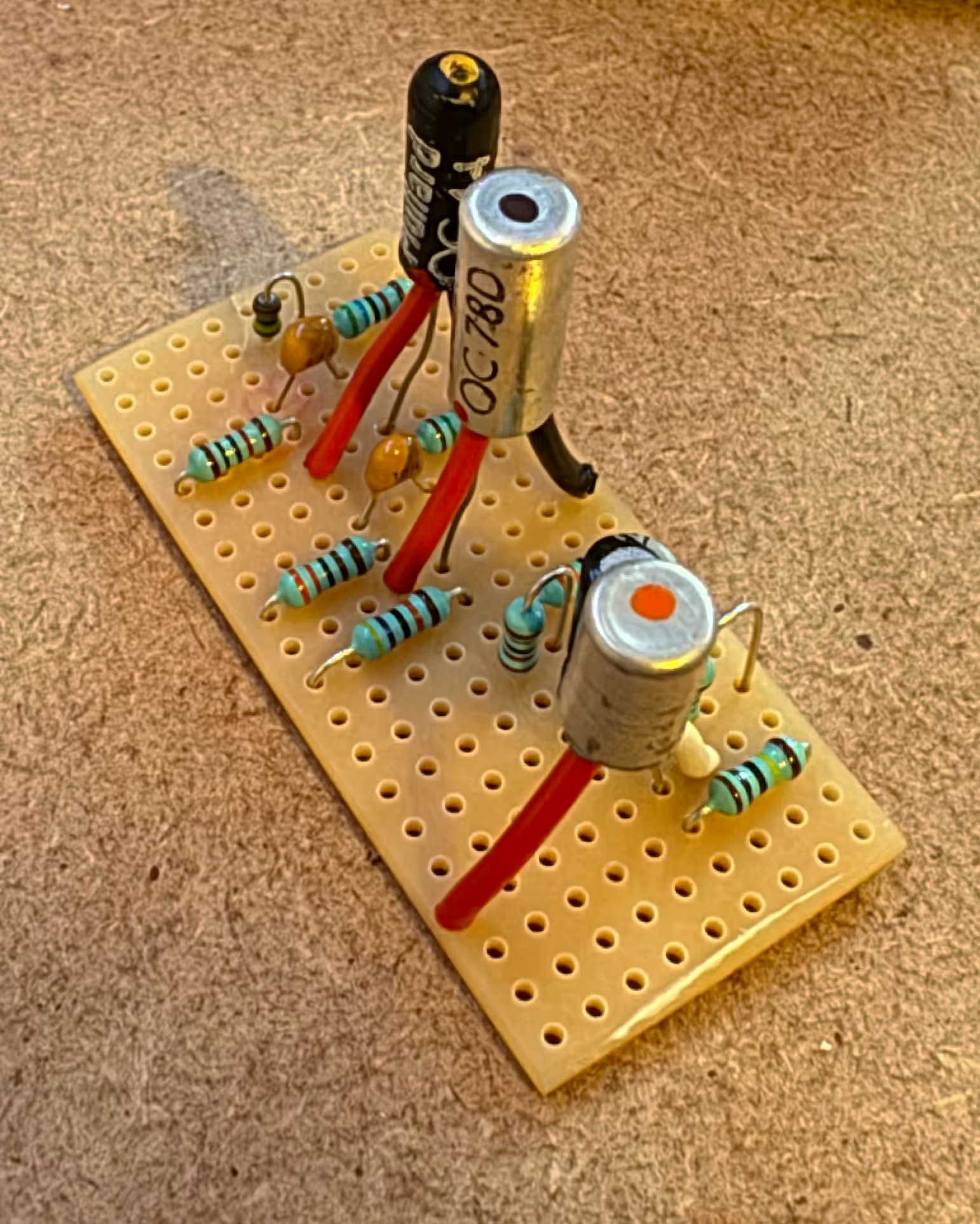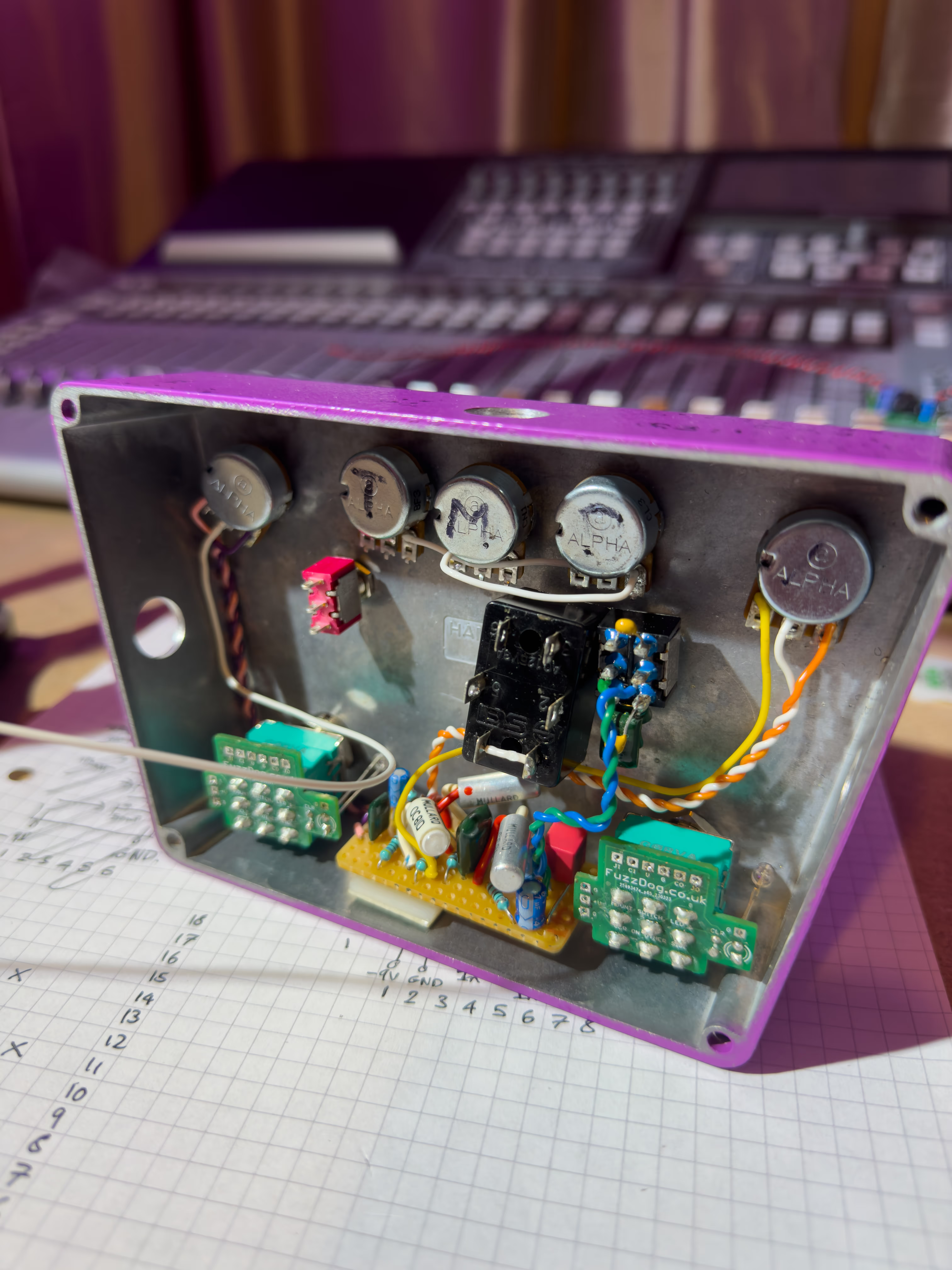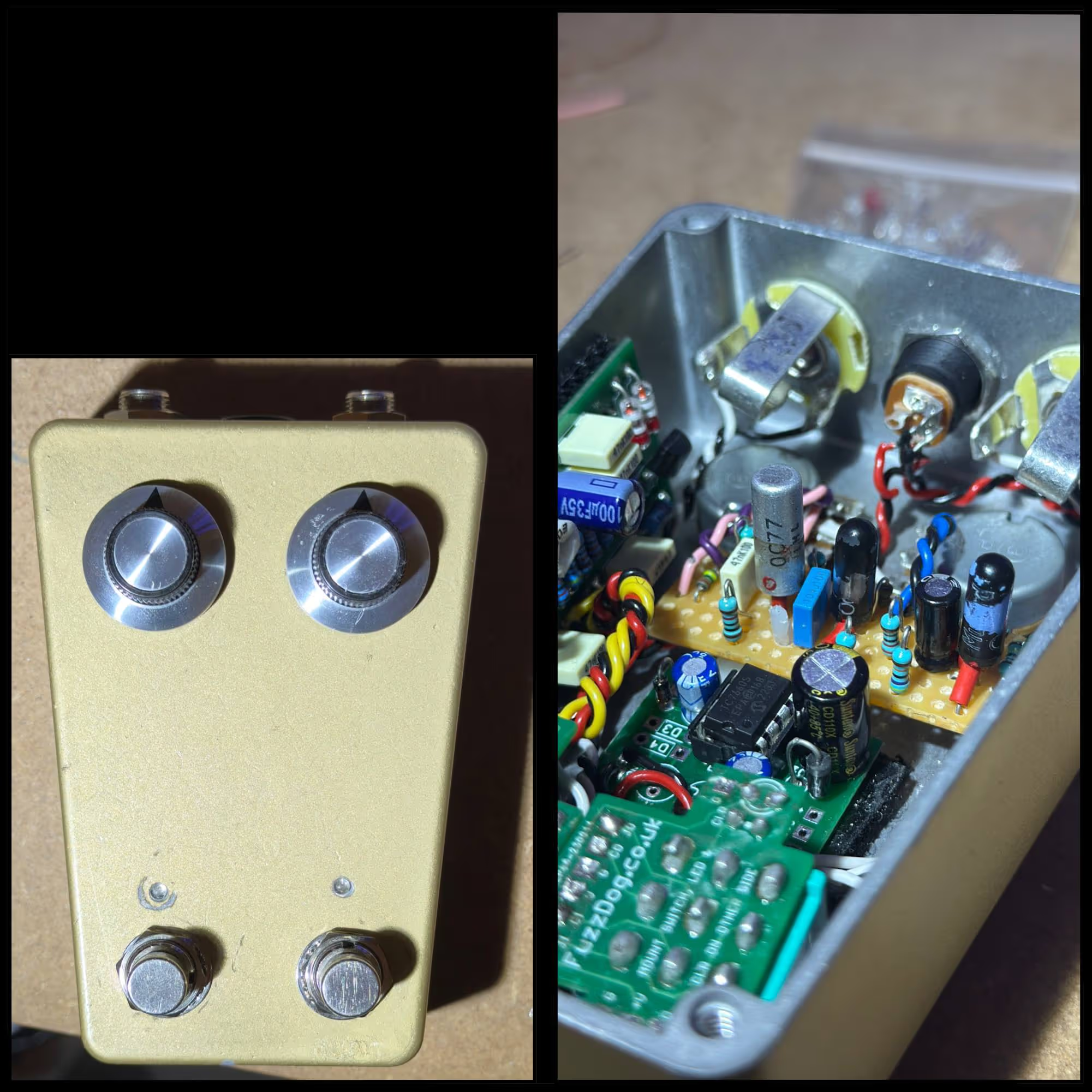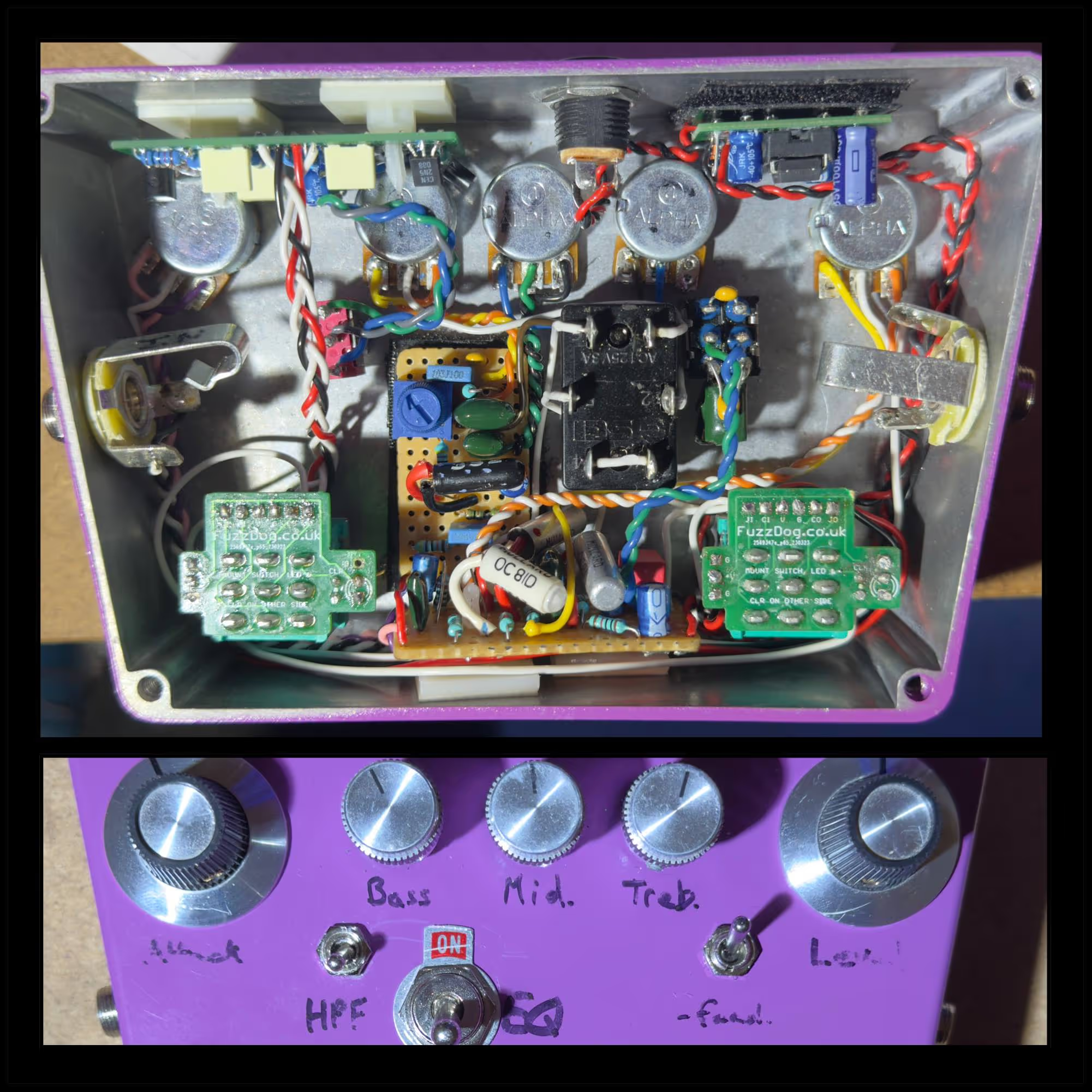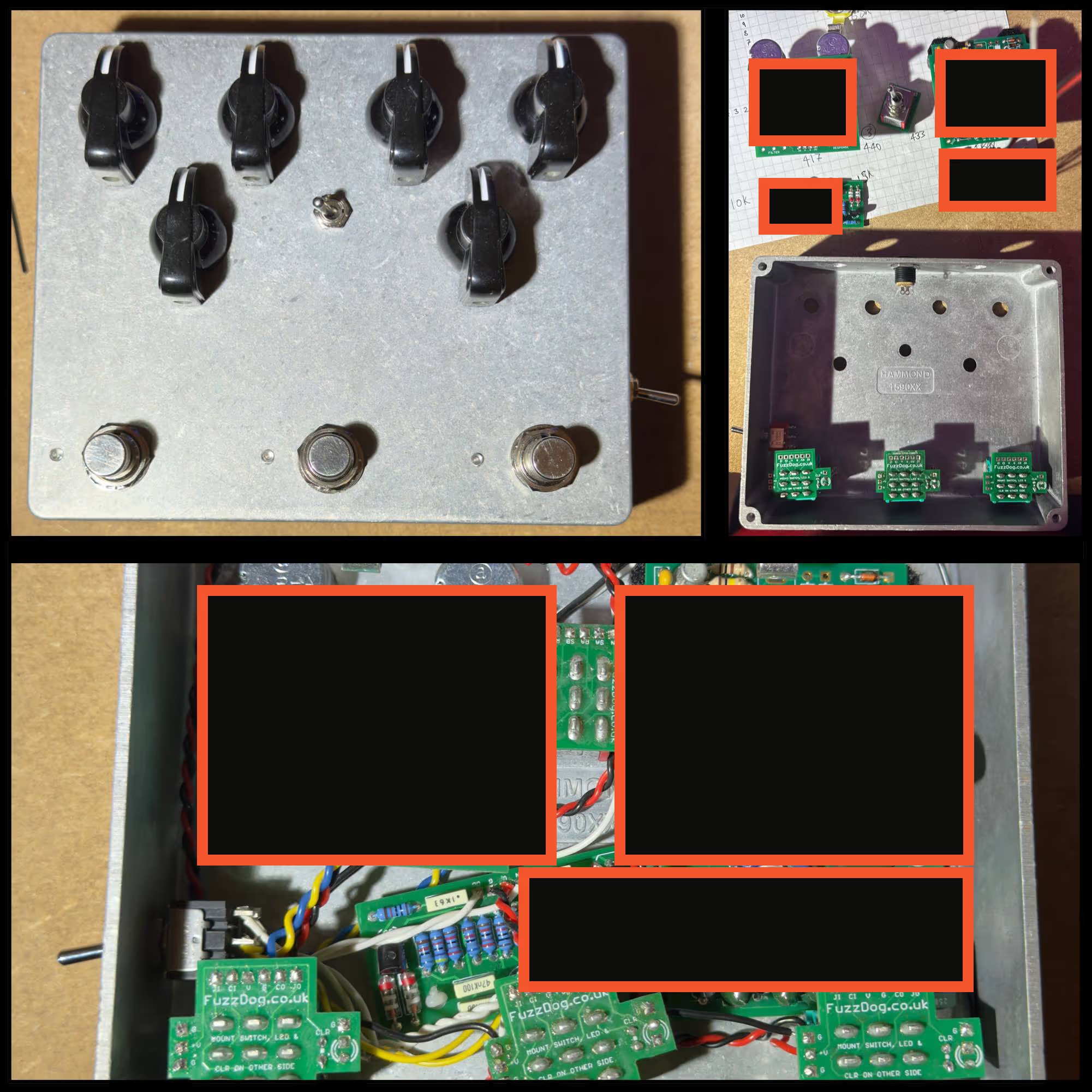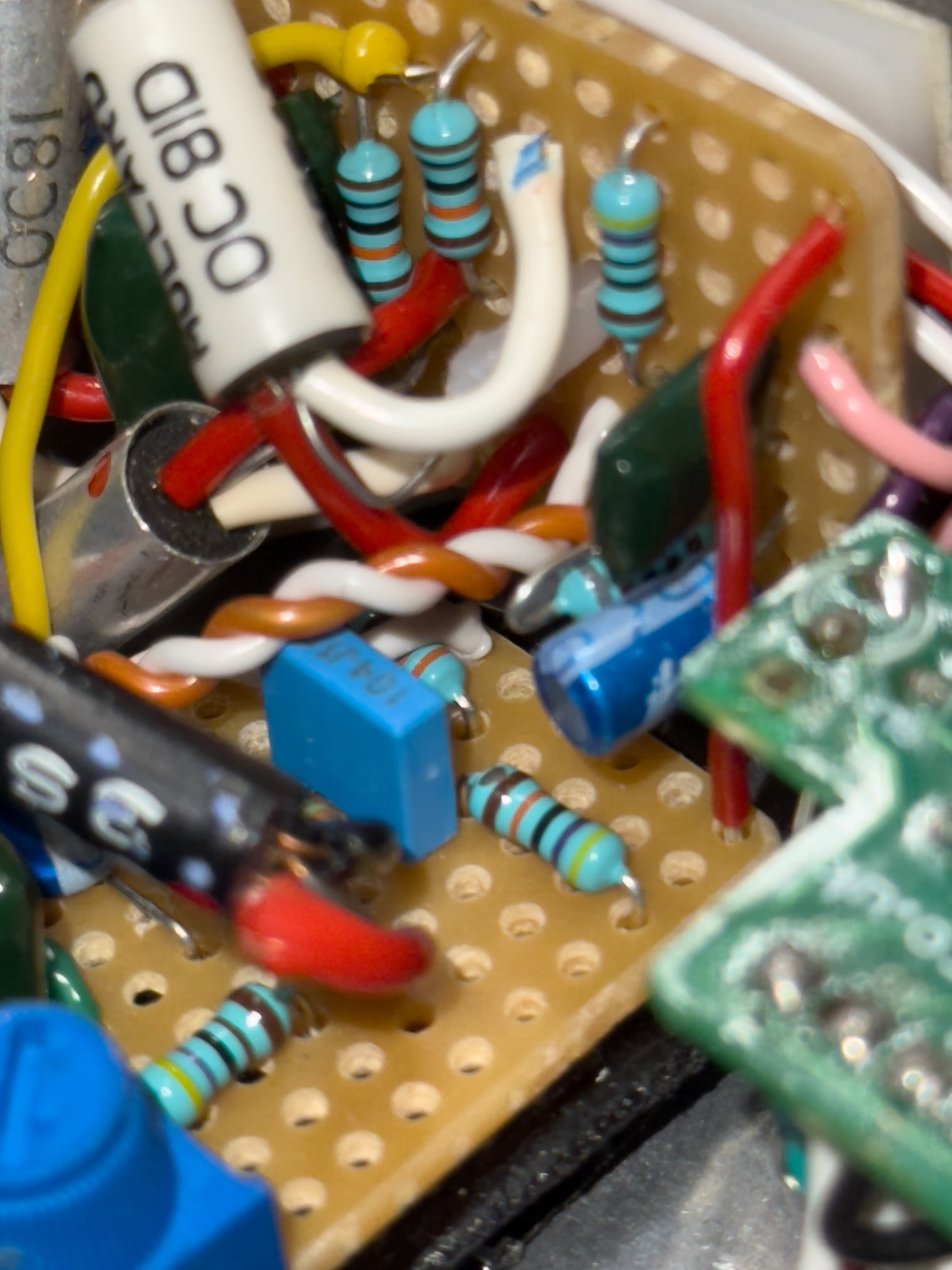
My specialty, when it comes to building stompboxes is starting with a truly vintage basis. Components that are like hen's teeth to find nowadays... I have my ways. Class-A topology, all discrete audio path, no electrolytic caps in audio path - all concepts taken from 5-figure mastering gear.
I strive for nailing the exact sound, or piece of equipment you have in your head. A Selmer Treble n Bass, but made from two Tone-Benders in parallel? A Marshall tone stack, driven by a flat-response version of the Dallas Rangemaster? A Violet Ram's Head Big Muff, and V1 RAT, in switchable position series, with analogue octave up and down afterwards?
One thing a keen eye will notice from the photos is that I do not use vintage resistors, and capacitors in the way other builders may. I believe the accuracy and longevity of the top-of-the-line parts you can get today is far beyond that of anything from the past. This makes my pedals more consistent, maintain their characteristics for longer, and in most cases the result is more exciting than 100% NOS/VOS components, because the colouration of the active components is carried more cleanly to the output of the circuit.
